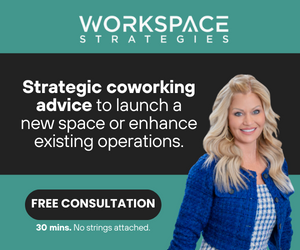- AI is routinely used to identify and interview candidates.
- Biases can be introduced if AI is not trained responsibly.
- But you can automate the right way, with the right approach.
The world of recruitment has been turned upside down. In 2020, recruiters had a big pool of candidates applying for roles. In a post-pandemic world, they’re facing the opposite problem – there’s a lack of talent and many roles are left unfilled.
The pundits were quick to label this as The Great Resignation with many claiming that employees didn’t want to go back to the office (or, at the very least, leave their flexible working options behind).
As such, recruiters were left in a tailspin where they had to make themselves attractive to candidates, instead of the other way around.
But the world of recruitment wasn’t going to give up that easily. Instead, it turned to its old enemy for help – artificial intelligence (AI).
AI and the world of recruitment
Way back when AI was starting to make its presence felt in the real world, there was much scare-mongering about robots stealing jobs from the masses. In truth, it’s a double-edged sword with automation actually creating more jobs than it’ll take (it’s just a shame workers don’t have the required skills yet).
Now, AI is having an increasing impact on the world of recruitment. More than half of talent seekers still say the most challenging part of the recruitment is identifying the right candidates from a large application pool. This is where AI can help, automating many of the mundane and repetitive parts of the recruitment process.
Research reveals that 35% of talent professionals and hiring managers believe automation is the top trend impacting how they will hire with many turning to Application Tracking Systems to streamline the process.
Companies are also turning to chatbots to converse with candidates online. Video interviewers are used to record and then assess a candidate’s interview, looking for certain emotions, tones of voice, even eye movements.
What are Application Tracking Systems?
Application Tracking Systems help companies organise candidates across the recruitment process. They’re also incredibly popular with more than 95% of Fortune 500 companies reportedly using such systems.
But what do they actually do? Well, each one is different in terms of its capabilities and functions. But most allow candidates to easily apply for a position (usually without logging in or registering with a new platform). Such systems also integrate with popular job boards, helping recruiters cast a wide net with their postings. Then, each candidate is automatically ranked based on their skills and experience.
That’s not all. Most Application Tracking Systems also allow recruiters to add notes and feedback about a candidate, helping them have all the information they need about a candidate with one swipe.
Some Application Tracking Systems also use technologies such as AI and natural language processing to screen and sort candidates’ applications. Such systems routinely scan for specific keywords and other metrics based on the recruiter’s requirements for the role, automating the recruitment process and only presenting recruiters with those applications that make the AI cut.
In fact, research reveals that 75% of applications are never read by a human.
But wait.
Could Application Tracking Systems and other AI tools (the very solutions that are meant to be helping recruiters) actually be preventing top talent from getting through the digital paper sift?
Writing in the Wall Street Journal, reporter Kathryn Dill said: “Companies are desperate to hire, and yet some workers still can’t seem to find jobs. Here may be one reason why: The software that sorts through applicants deletes millions of people from consideration.”
This isn’t just one person’s concern. Further research from the Harvard Business School also revealed that 88% of employers believe qualified applicants are filtered out by such screening software.
Worse, Application Tracking Systems could put businesses at risk of discriminating against candidates. The Federal Trade Commission (FTC) recently stated that this “apparently ‘neutral’ technology can produce troubling outcomes — including discrimination by race or other legally protected classes.”
Speech recognition software has also been demonstrated to have biases against dialectical and regional speech variations with AI facial analysis also showing “clear disparities” across skin colour, a report from Brookings Institution added.
There are also concerns about automated systems reinforcing gender stereotypes, eliminating certain age brackets and overlooking the nuances of disability. The list goes on.
But these issues haven’t stopped automation from advancing across the recruitment process. Chatbots are now used to respond to candidates’ questions. Automated systems are also targeting job adverts to relevant candidates and running certain psychometric tests.
Some companies are even using data analysis beyond the recruitment process, personalising their inductions and matching existing to internal opportunities. So, should companies still rely on AI to find the right candidates?
Surprisingly, the answer is: yes.
Automating the right way
As with any technology, artificial intelligence is capable of both good and bad. The fears surrounding biased AI systems ignore a key fact: that humans are the root source of bias in AI systems in the first place.
In other words, if you use a biased data set to train your algorithms, you’ll get biased results back. AI systems will only draw conclusions from the data it is fed. Garbage In, Garbage Out, right? It’s an old adage (now, with an AI upgrade).
There are plenty of examples of good AI going bad. Amazon, for example, scrapped its AI recruiting tool when it was biased against female candidates. Why? Because the AI was trained using 10 years of recruitment data that inadvertently taught it that men had historically been preferred over women in tech roles.
This is one example where AI recruiting tools are trained using data from existing employees. To train an application scanner, for example, a company would collect and compare existing applications to performance data like annual reviews or their sales figures.
These data sets teach algorithms how to identify applications that mirror the organisation’s top talent.
But this recreates the very biases that companies are trying to prevent, where AI systems favour candidates with the same traits as the existing workforce.
The goal, therefore, is to feed the AI system a clean data set by removing all information that could contribute to unconscious bias. Here’s how:
- Clean the data set: if you are scanning application forms, for example, you could remove names, location, gender, date of birth and other such information. This is known as “blind hiring” – where information not related to the job is removed.
- Test, test, test: if you think your AI is ready, wait and test thoroughly. You need to ensure the person who has built the system has not subconsciously included any preconceived notions.
- Continuously monitor: once your AI is live, don’t just ignore it. Constantly test and monitor to make sure bias isn’t introduced later on and ask for feedback from the people using it.
This last point is an important one. Companies should never blindly follow the recommendations from an AI system. Human hiring managers must retain control over the decision-making process and ensure biases are not creeping into the recruitment process.
How? Well, there’s an app for that too. You can actually flip how you use AI on its head. Instead of using it to sift through candidates, you can use AI to analyse and audit your recruitment practices.
For most companies, building an AI system from scratch isn’t an option – and there are plenty of third-party solutions out there to help across the recruitment process. These include:
- Writing your job posts: if you want to make sure your job descriptions are “inclusive and on-brand” then Textio uses machine learning to help you optimise your job descriptions.
- Targeting your job posts: LinkedIn offers an automated targeting experience that allows you to target the right candidates with specific skill sets and qualifications. This improves the quality of the recommended matches for your job post.
- Scanning your applications: when the applications are in, there are many tools available to sift through your candidates. CVViZ, Ideal and Sniper AI are three examples.
- Assessing your applications: for your psychological assessments, there are tools like Humantic and Pymetrics to analyse applicants.
- Interviewing your applicants: how did your applicants perform during the recruitment process? Well, there’s even an app for that. Tools including BrightHire, Harqen, HireVue and Modern Hire provide algorithms to analyse your conversations and predict which candidates will perform best in the role.
These are just a handful of examples. So, when choosing your AI recruitment platform, here are some points to consider:
- Ask for evidence: there’s a lot of hype in the AI space. Make sure you ask a vendor for evidence and examples of how their algorithms work – and how they train that system. This is particularly important to remove bias from your recruitment process.
- Prioritise data analysis: your AI should help you make the right recruitment decisions – but not all systems include data analysis tools. Instead, recruiters have to wade through reams of data to get the insights they need. So, find a tool with a solid data analysis toolset.
- Match it to your business: you don’t have to use AI at every stage of the recruitment process. Instead, it may be better to identify the biggest time sink in your recruitment pipeline and just use an AI system to help with that task.
- Ask about integration/usability: you also don’t want to waste time integrating your AI with your existing systems and then spending time learning how to use the system. Make sure you find a system that’s intuitive to use and easy to set up. Also, ask about customer support to make sure you have someone to ask for help if needed.
- Trial it: most AI vendors will offer a free trial period. During this time, you can check that your system does what it promises and aligns with your recruitment goals.
In conclusion
AI is now used across the recruitment industry, helping companies find the right candidates and also helping candidates find the right job. When it comes to the benefits of AI in recruitment, the stats speak for themselves. AI can help recruiters save 14 hours per week lost to manually completing tasks and 96% of recruiters believe AI can greatly enhance talent acquisition and retention.
But it’s also important to remember that AI is simply a machine – and the human recruiters are responsible for, well, using these tools in a responsible way.

 Dr. Gleb Tsipursky – The Office Whisperer
Dr. Gleb Tsipursky – The Office Whisperer Cat Johnson – Coworking Marketing Maven
Cat Johnson – Coworking Marketing Maven Angela Howard – Culture Expert
Angela Howard – Culture Expert Drew Jones – Design & Innovation
Drew Jones – Design & Innovation Andrea Pirrotti-Dranchak – Competitive Advantage
Andrea Pirrotti-Dranchak – Competitive Advantage Jonathan Price – CRE & Flex Expert
Jonathan Price – CRE & Flex Expert Jeremy Fennema – Tech Innovation Alchemist
Jeremy Fennema – Tech Innovation Alchemist







